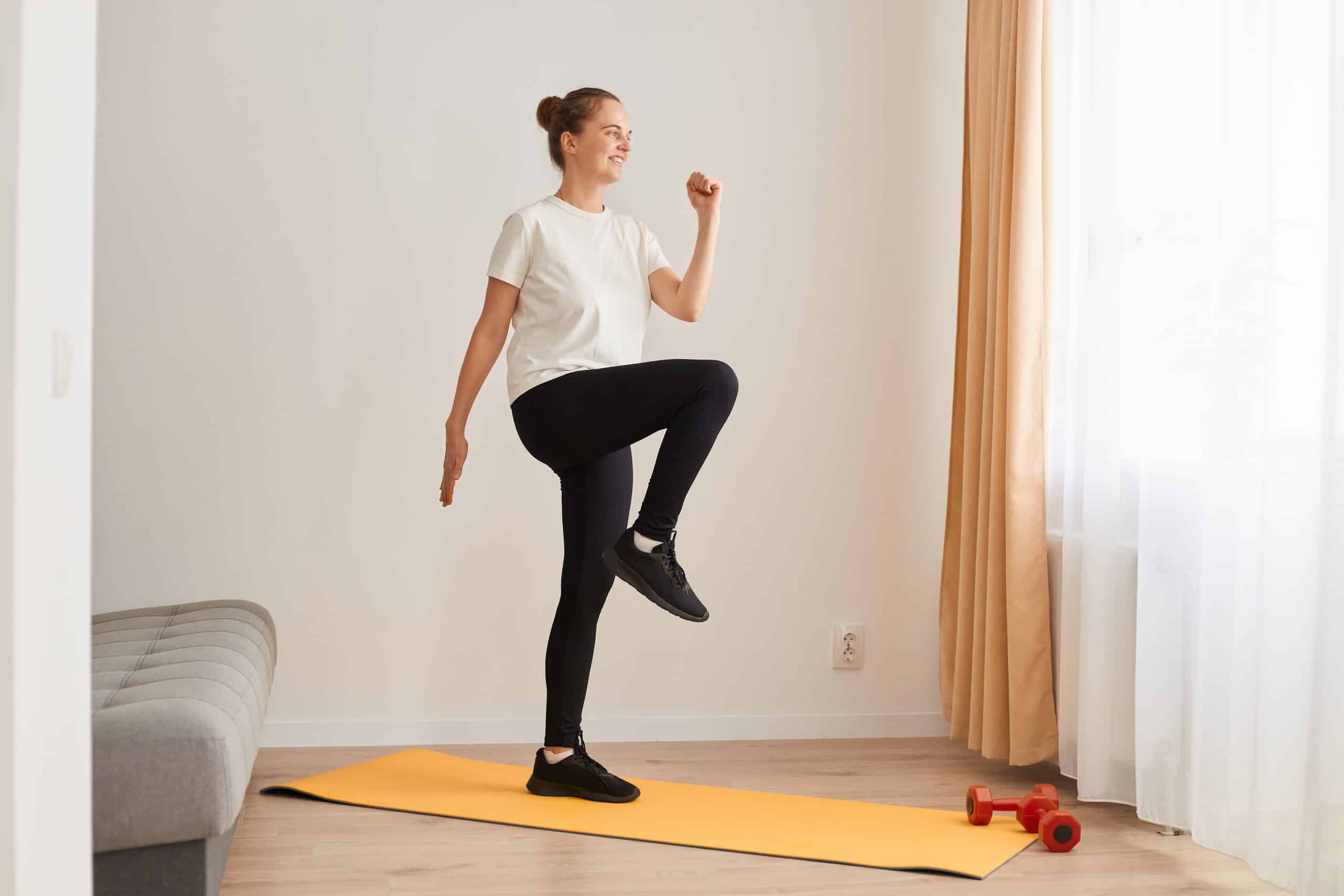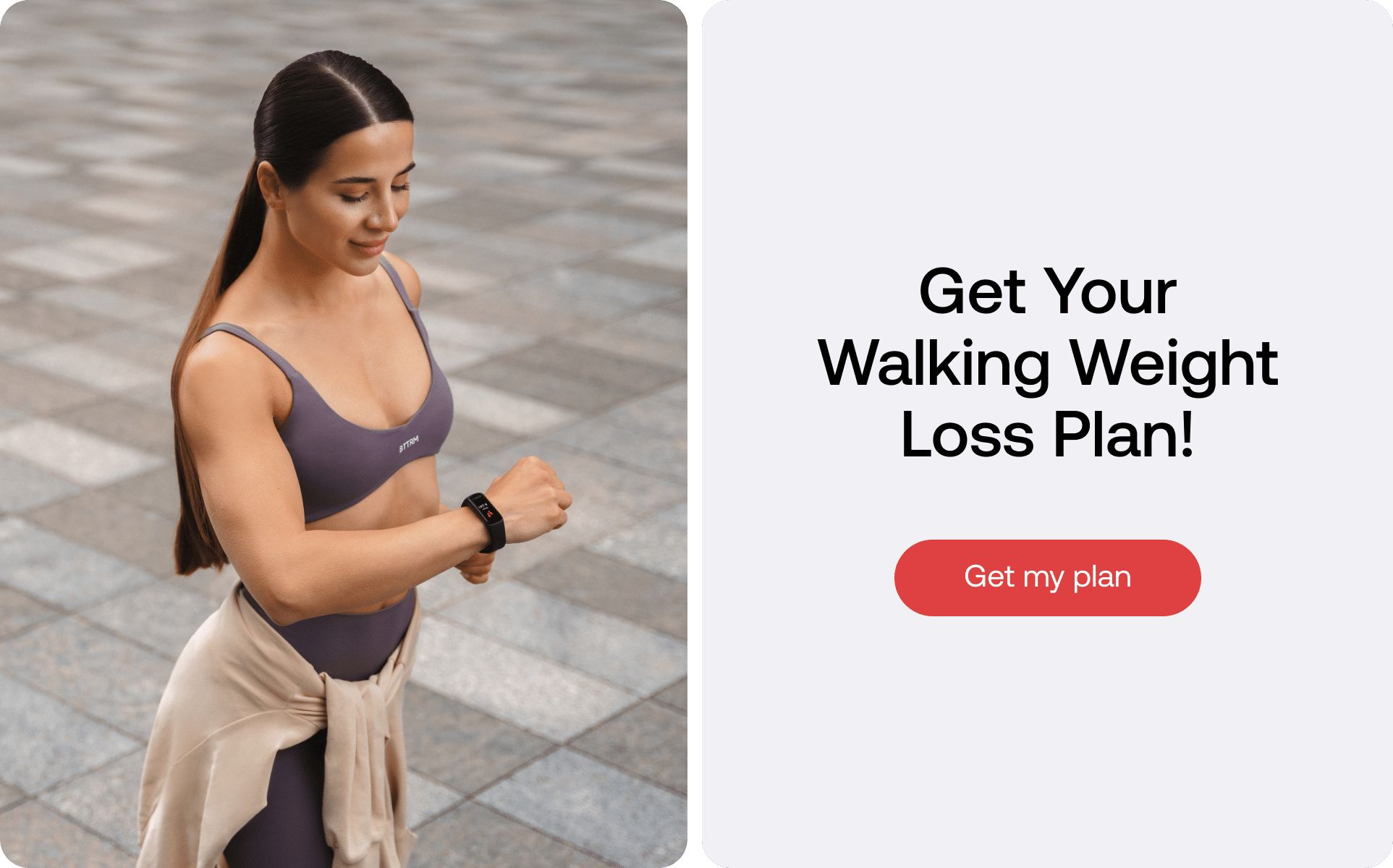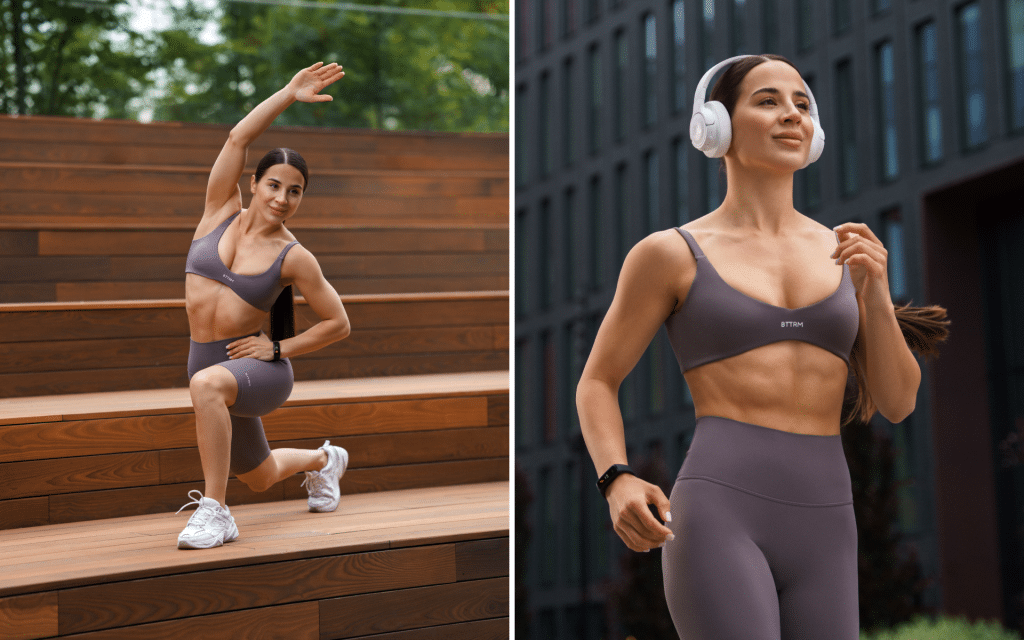Is walking in place the same as walking? Walking in place seems like little effort, but can you benefit from it in the same way as from walking for leisure? Wondering whether or not it can benefit you the way regular walking does is a valid question
First, we have to consider the definition and benefits of physical activity. Can you reap rewards with this indoor exercise at home?
Can Walking in Place Count as Exercise?
Here are a few benefits walking in place can provide:
- It’s a low-level activity that may boost heart health (13)
- It may count towards your recommended daily steps (6, 9)
- It may burn calories similar to walking on a treadmill (6)
- It could burn nearly as many calories as walking at a moderate pace (6, 4)
- It could help you to lose weight with the right intensity (7, 1, 10)
Let’s expand on these benefits.
Is Spot Walking the Same as Walking?
Spot walking isn’t the same as walking around the house or walking outside, which takes you from one point to another. Instead, walking in place is just that– marching or stepping on the same spot repeatedly. Let’s further compare it to walking, and discover the possible health benefits.
Does Walking in the Spot Count as Steps?
Getting your steps in is a valid form of exercise, especially if you’re sedentary and new to physical activity. A Swedish review found that even low-level physical activity was a factor of shorter hospital stays and fewer readmissions for all mortality causes in cardio patients (13).
Any form of physical activity is better than none. You may protect your heart health by becoming physically active, which may benefit you more if you were previously inactive.
A University of Tennessee study found that stepping in place during the commercial breaks of an hour-long tv show allowed participants to add an additional 2,000 steps into their daily activity plan (6). The CDC recommends getting 10,000 steps a day, and walking on the spot can be a useful tool in pursuit of that goal. (9).
Is Walking in Place the Same as Walking on a Treadmill?
A University of Tennessee study compared the calories burned while walking on a treadmill, stepping in place, and watching commercials in a sedentary position for an hour (6).
Stepping in place burned 258 calories an hour while walking at 3 mph on a treadmill burned 304 calories. Walking in place may not present the same intensity as a treadmill, but you’ll still burn calories stepping on the spot at a moderate pace. Increasing your pace or adding other movements may burn even more calories.
Lean and toned up body isn’t just a far-fetched fantasy. Check out the BetterMe app and watch it propel your weight loss journey into high gear!
Is it Better to Walk in Place or Walk?
The study doesn’t note individual weights or the stepping pace. However, it’s the closest research available on this aspect of walking in place.
In comparison, a Harvard University study showed that a person who weighs 155 pounds and walks at 3.5 mph will burn 133 calories in 30 minutes or 166 calories in an hour (4). The same person who is walking at 4 mph will burn 175 calories in 30 minutes or 350 calories in an hour.
While there isn’t concrete evidence that walking in place burns more calories than walking outside, calories burned per hour increases when the pace of either activity intensifies.
Can Walking in Place Help You Lose Weight?
Losing weight is about creating a calorie deficit–burning more calories daily than you consume. WebMD suggests you must create a 500-calorie deficit daily to burn a pound weekly (2). Let’s look into how to increase your calorie burn through walking on the spot.
It’s easy to increase the intensity or speed of regular walking, but how can you increase your calorie burn when walking in place? You can increase the intensity by moving additional limbs, marching higher, or increasing the rate at which you step in place. Increasing overall intensity will elevate your heart rate, all which will help burn more calories.
Research at the University of New Mexico supports the idea that an increased demand for your heart to pump more oxygen burns more calories (1). Meanwhile, a University of St Thomas study found the best fat-burning maximum heart rate percentage during exercise to be (10). More research is necessary, but increasing the intensity during your exercise will increase your overall calorie burn.
How to Increase Intensity When Walking in Place
A small comparative study in Alabama found that high interval training with some resistance burned more calories compared to aerobics alone (3).
Adding fast and moderate paced intervals could help you raise your heart rate while walking in place. Start slowly for a minute, before marching moderately fast to fast for another minute or two. Additionally, add in resistance to increase the intensity by carrying weights while spot walking.
How Long Should I Walk in Place to Lose Weight?
The Mayo Clinic recommends at least 150 minutes of moderate-intensity cardiorespiratory exercise weekly (7). Walking in place counts as cardio, meaning you need to walk in place for 30 minutes five times a week. If your schedule is too busy, you can break up those 30 minutes into three 10-minute sessions.
Simply creating a calorie deficit in your diet could lead to a 2% loss in body weight over 6 months (2). However, in oder to get the same physical benefits from walking in place as you would from outdoor or treadmill walking, you must increase the intensity to ensure you burn more calories– aim for 60-70% of your maximum(7).
Read more: The 28-Day Indoor Walking Weight Loss Challenge Explained
How to Walk in Place
Using the information provided above, and a few extra tips, let’s create an indoor walking plan that will rival an outdoor walk.
- Wear comfortable and supportive shoes when walking in place because the right shoes can prevent ankle and foot injuries and reduce joint pain (14). Replace your spot walking shoes every 12 months for the best foot protection.
- Walk in place for five 30-minute sessions weekly or three 10-minute sessions five days a week to get your minimum of 150 minutes each week (7). Walk whenever you get the chance; if you’re on the sidelines at your kid’s game or waiting in line at a store.
- Use a heart rate monitor, pedometer, or fitness tracker while walking in place to keep your maximum heart rate percentage in check for maximum calorie-burning effects (10). Set goals, track your heart rate and daily steps with indoor walking.
- Swing your arms while walking on the spot. According to the Australian Fitness Academy, compound movements with multiple muscles and joints burn more calories than isolated exercises and require more energy expenditure (15).
- Bring your feet closer to your buttocks while indoor walking, which should add more resistance and increase the calorie burn. A 5’8” 35-year-old woman weighing 155 pounds will burn 328 calories per hour marching (8).
- Create a routine with exercises from the list below to create workouts between indoor walking sessions at home. The exercises also prevent boredom and allow for some variety and excitement during workouts.
Looking for a way to break the vicious cycle of weight loss and tone up all the jiggly parts? Watch the extra pounds fly off and your muscles firm up with the BetterMe app!
Walking in Place Exercises to Add for Interval Training
Here are some fantastic exercises to add in between indoor walking routines to give yourself the benefit of increasing your heart rate and calorie burn (3). These exercises will burn the following calories if done vigorously. This example is for a 5’6” 35-year-old woman weighing 155 pounds (5):
- Crunches – 121 calories
- General dancing – 336 calories
- Jumping jacks – 344 calories
- Push-ups or pull-ups – 164 calories
- Squats – 215 calories
For more walking benefits:
- 28-Day Indoor Walking Weight Loss Challenge
- Calories Burned Walking 1 Hour
- Calories Burned Walking 30 Minutes
FAQs
Does Walking in Place Build Muscle?
Walking is cardio, meaning it may not build lean muscle tissue. (11). This Mayo Clinic review found that cardio exercises can strengthen and induce skeletal muscle protein synthesis. Walking in any form may improve lean muscle function and strength.
Can Walking in Place Replace a Treadmill?
Walking in place won’t replace walking on a treadmill, however you can still burn a decent amount of calories if done at a moderate intensity for an extended period of time. A University of Tennessee study showed that you can burn 258 calories an hour walking in place (6).
What Exercises Can Replace Walking?
Exercises with aerobic benefits and similar calorie burns could replace walking. Walking in place can burn 129 calories in 30 minutes while walking at 3.5 mph on a treadmill burns around 152 calories in 30 minutes (6). Here are exercises with similar calorie burns for a 150-pound person in half an hour (4, 5):
- Disco or ballroom dancing – 198 calories
- Hatha yoga – 144 calories
- Moderate callisthenics – 162 calories
- Water aerobics – 144 calories
How Many Calories Can You Burn Walking 10,000 Steps?
It depends on weight, height, and walking speed. A 5’5” person weighing 150 pounds and walking at 3.5 mph will burn 359.74 calories in 10,000 steps (12). Meanwhile, a 5’8” person weighing 160 pounds walking at 2 mph will burn 482 calories. The CDC recommends walking at least 10,000 steps daily to reduce chronic disease risks (9).
The Bottom Line
Is walking in place the same as walking? Not exactly, but it can still bring you benefits. Increasing the intensity of your spot walking will result in possible health and weight-loss benefits. Shake things up a bit, add weights, kick high, and march at a rapid pace to maximize the benefit from your indoor walking routine.
DISCLAIMER:
This article is intended for general informational purposes only and does not serve to address individual circumstances. It is not a substitute for professional advice or help and should not be relied on for making any kind of decision-making. Any action taken as a direct or indirect result of the information in this article is entirely at your own risk and is your sole responsibility.
BetterMe, its content staff, and its medical advisors accept no responsibility for inaccuracies, errors, misstatements, inconsistencies, or omissions and specifically disclaim any liability, loss or risk, personal, professional or otherwise, which may be incurred as a consequence, directly or indirectly, of the use and/or application of any content.
You should always seek the advice of your physician or other qualified health provider with any questions you may have regarding a medical condition or your specific situation. Never disregard professional medical advice or delay seeking it because of BetterMe content. If you suspect or think you may have a medical emergency, call your doctor.
SOURCES:
- Calorie Burning (n.d., unm.edu)
- Caloric Deficit: What to Know (2023, webmd.com)
- Caloric Expenditure of Aerobic, Resistance, or Combined High-Intensity Interval Training Using a Hydraulic Resistance System in Healthy Men (2015, pubmed.ncbi.nlm.nih.gov)
- Calories Burned in 30 Minutes of Leisure and Routine Activities (2021, health.harvard.edu)
- Diet Tool: Calories Burned Calculator for Common Exercises and Activities (n.d., webmd.com)
- Energy Cost of Stepping in Place While Watching Television Commercials (2012, pubmed.ncbi.nlm.nih.gov)
- Exercise Intensity: How to Measure It (2023, mayoclinic.org)
- How Many Calories Are Burned Marching, Rapidly, Military (n.d., fitday.com)
- Opportunities for Increased Physical Activity in the Workplace: The Walking Meeting (WaM) Pilot Study, Miami (2015, cdc.gov)
- Quantifying Differences in the “Fat Burning” Zone and the Aerobic Zone: Implications for Training (2009, pubmed.ncbi.nlm.nih.gov)
- Skeletal Muscle Hypertrophy after Aerobic Exercise Training (2015, ncbi.nlm.nih.gov)
- Steps to Calories Calculator (n.d., omnicalculator.com)
- Subjective Reports of Physical Activity Levels and Sedentary Time Prior to Hospital Admission Can Predict Utilization of Hospital Care and All-Cause Mortality Among Patients With Cardiovascular Disease (2020, ncbi.nlm.nih.gov)
- Tips for Choosing Walking Shoes (2022, health.harvard.edu)
- What Are Compound Exercises? | AFA Blog (2024, fitnesseducation.edu.au)











